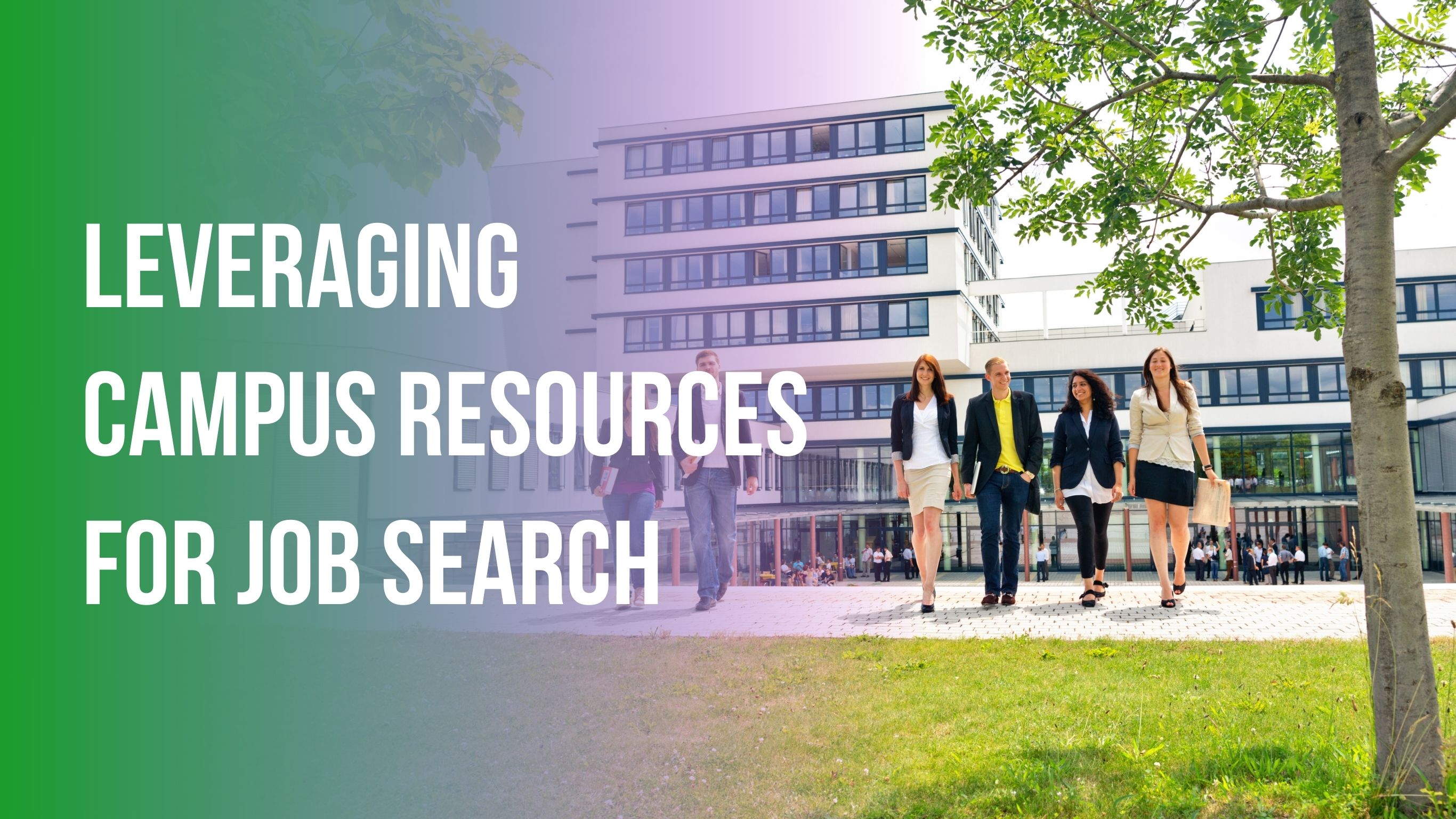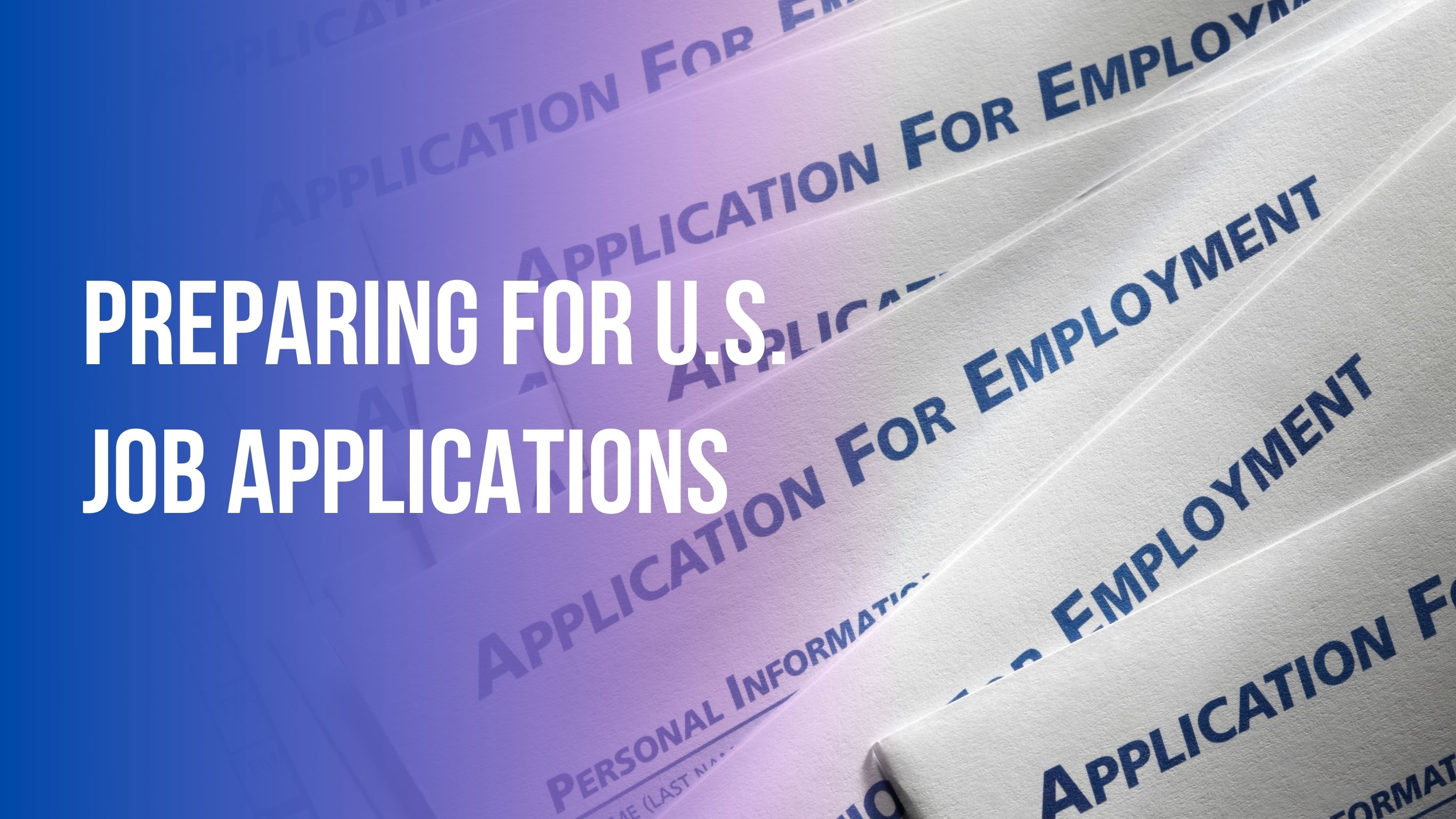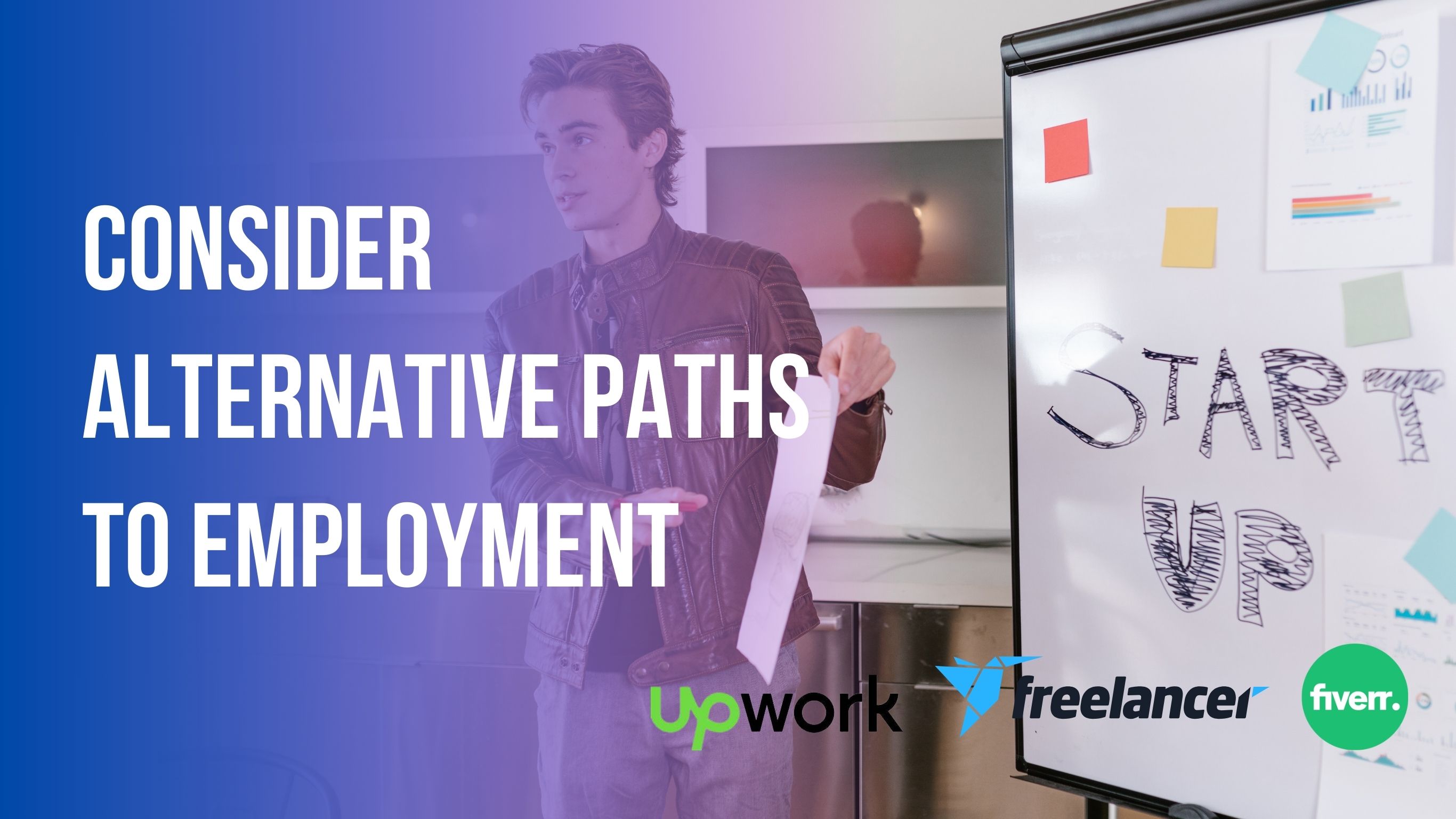Introductions
Moving to the U.S. as an international student is a thrilling experience filled with opportunities for learning and growth. But if you're also looking to gain work experience while studying, you may be wondering where to start and what the requirements are. From navigating visa requirements to understanding the U.S. job market, there’s a lot to consider. This guide will cover everything you need to know about finding jobs in the U.S. as an international student, including different work authorization options, networking strategies, résumé tips, and more.

Why Work Experience in the U.S. Matters
Gaining work experience while studying in the U.S. can significantly boost your résumé, strengthen your professional skills, and prepare you for a global job market. For many international students, the U.S. offers exposure to a unique corporate culture and professional environment, which can be valuable whether you plan to stay in the U.S. after graduation or return to your home country. Plus, U.S. employers highly value relevant work experience, so having that on your résumé can give you a strong advantage when you apply for full-time roles.
Understanding Work Authorization Options
When studying in the U.S. on an F-1 visa, your options for working will largely depend on the type of work authorization you receive and whether you want to work on-campus or off-campus. Here’s a breakdown of the main options:

On-Campus Employment
Most U.S. universities allow F-1 international students to work on-campus during their studies. You can work up to 20 hours per week during the academic term and full-time during breaks (such as summer vacation or winter break). On-campus jobs are typically convenient for students, as they are easy to access and allow for more manageable schedules.
Types of On-Campus Jobs Available
- Library Assistant: Helping with library operations.
- Research Assistant: Assisting faculty with research projects.
- Student Ambassadors: Supporting campus tours and events.
- Cafeteria or Dining Services Staff: Assisting in the university dining areas.
- IT Support: Helping students and staff with tech issues on campus.
These roles are not only financially helpful but also offer opportunities to meet fellow students, faculty, and staff, building a valuable support network on campus.
Learn how to get full funded scholarship in U.S.

Curricular Practical Training (CPT)
Curricular Practical Training (CPT) is a type of off-campus work authorization that allows F-1 students to work in roles directly related to their field of study. CPT can be a paid or unpaid internship, cooperative education, or any other type of position that counts as part of your academic program. Here’s how it works:
- Eligibility: You must be enrolled in a program for at least one academic year before you can apply for CPT.
- Limitations: You must receive approval from your academic advisor and your university’s international office. CPT must be completed before you graduate.
- Application Process: CPT typically requires you to secure a job offer first, and then apply for authorization through your school. It may take a few weeks to process, so plan ahead.
Optional Practical Training (OPT)
Optional Practical Training (OPT) allows F-1 students to work for up to 12 months in the U.S. after graduation (or up to 36 months for STEM graduates). OPT can be done either before or after graduation (called Pre-OPT and Post-OPT), and it does not require an immediate employer sponsorship, making it a popular choice for recent graduates.
Benefits of OPT
- No Immediate Sponsorship Required: OPT is an open work authorization, so you can work for any employer within your field of study.
- STEM OPT Extension: If you’re in a STEM field, you can apply for a 24-month extension, which allows you to work for a total of 36 months in the U.S.
STEM OPT Extension
Students in qualifying STEM (Science, Technology, Engineering, Mathematics) fields can apply for an additional 24 months of work authorization under the STEM OPT extension. This is a significant advantage, as it provides more time to find potential H-1B sponsorship, giving you a competitive edge in the job market.
- Requirements: Your employer must be enrolled in E-Verify, and the job must directly relate to your field of study.
- Application Process: You’ll need to apply through USCIS, and the application can take a few months to process, so be sure to plan accordingly.

Leveraging Campus Resources for Job Search
One of the best places to start your job search as an international student is on campus. U.S. universities have robust support systems and resources specifically for helping students with career planning.
Career Services Office
Most universities have a Career Services Office that provides resources like résumé reviews, mock interviews, and job listings tailored to students. They also host career fairs and networking events, which can be incredibly helpful for connecting with potential employers who understand the visa requirements of international students.
International Student Office
The International Student Office is an invaluable resource, especially when navigating the complexities of U.S. immigration and visa regulations. Staff at this office can help you understand your work authorization options, ensure compliance with visa rules, and assist with applications for OPT or CPT. They can also provide guidance on which companies have a history of hiring international students.
Alumni Networks
Most universities have alumni networks that international students can leverage. Connecting with alumni who work in your field can provide insights into companies that hire international students and often result in valuable job leads. Many universities also offer alumni mentorship programs, where current students can receive career advice and guidance from recent graduates.

Networking: Building Connections in the U.S.
Networking plays a huge role in finding jobs in the U.S. and is especially important for international students. Many roles aren’t publicly posted and are filled through referrals, so knowing the right people can make all the difference.
Join Professional Associations
Most industries have professional associations that welcome students. These associations host events, conferences, and have job boards specifically for members. Many also offer student memberships at reduced rates, providing an affordable way to expand your network.
Attend Career Fairs and Industry Events
Career fairs—whether on-campus or virtual—offer the opportunity to connect directly with recruiters and hiring managers. Some career fairs focus specifically on industries like tech, business, or healthcare, making it easier to find employers in your field. Keep an eye out for events organized by your university, local organizations, or even LinkedIn.
Use LinkedIn for Networking
LinkedIn is a powerful tool for networking in the U.S. job market. Start by creating a detailed LinkedIn profile that highlights your skills, experience, and education. Connect with classmates, professors, and alumni, and join LinkedIn groups related to your field to engage with others in your industry.

Applying for Internships: A Step Toward Full-Time Employment
Internships are highly valued in the U.S. and are often a stepping stone to full-time employment. Many international students find that securing an internship leads to long-term job offers.
Finding Internships
- University Job Portals: Most universities have a dedicated job portal where employers post internships and job opportunities for students.
- Online Job Boards: Websites like Indeed, LinkedIn, and Glassdoor list internships across various industries and can be filtered for specific visa requirements.
- Networking: Reach out to your connections on LinkedIn or through your school’s alumni network to inquire about internship opportunities.
Making Internships Work for You
Internships are an opportunity to learn on the job and showcase your skills. Doing well in an internship may lead to a full-time offer, as many companies use internships as a way to vet potential hires.

Target Companies That Hire International Students
Not every U.S. company hires international students, so focusing on companies that are open to hiring from abroad can save you time and effort.
How to Find Companies Open to Sponsoring International Students
- MyVisaJobs: This website tracks visa sponsorship data, making it easy to identify companies with a history of hiring international employees.
- University Partnerships: Some companies partner with universities to recruit students and are familiar with CPT and OPT regulations, which can simplify the hiring process.
- Global Companies: Companies with international offices or a global presence are more likely to hire international students, as they often have experience with visa processes.
Top Industries for International Students
Certain fields are particularly in demand for international talent, especially in STEM areas. Here are some of the top industries for international students in the U.S.:
- Technology (Software Development, Data Science, Cybersecurity)
- Finance (Accounting, Financial Analysis, Investment Banking)
- Engineering (Mechanical, Electrical, Civil)
- Healthcare (Nursing, Public Health, Pharmaceuticals)
Learn more about the best major for study in U.S.

Preparing for U.S. Job Applications
The U.S. job market has its own set of expectations when it comes to résumés, cover letters, and interviews. Here’s what you need to know:
Customizing Your Résumé
- Concise and Relevant: U.S. employers prefer résumés that are one page, focused, and emphasize relevant achievements.
- Highlight Achievements: Use action verbs and quantify your achievements (e.g., “Increased sales by 20% in six months”).
- Include Keywords: Tailor your résumé to include keywords from the job description, as many employers use software to filter applicants.
Preparing for Interviews
U.S. interviews often focus on behavioral questions to assess if you’re a good cultural fit and if you have the problem-solving skills they’re looking for.
- Common Questions: Be ready to answer questions like, “Tell me about a time you overcame a challenge” or “What are your strengths and weaknesses?”
- Practice: Practicing answers to common interview questions with a friend or career advisor can help you build confidence.
- Discussing Visa Status: Be upfront about your work authorization (such as OPT or CPT) if asked, and explain how you are eligible to work in the U.S. This can reassure employers who may be unfamiliar with the process.

Consider Alternative Paths to Employment
While traditional full-time jobs are the goal for many international students, it’s worth considering alternative paths to gain experience:
Freelancing or Contract Work
Some international students explore freelancing if their visa allows. For students in creative fields or tech, this can be a way to gain relevant experience without a full-time commitment.
Entrepreneurship
Starting a business on an F-1 visa is complex and requires careful planning, but some universities offer support through entrepreneurship programs. If this interests you, reach out to your university’s international office to learn about your options.
Volunteering and Part-Time Work
Volunteering can build relevant experience and enhance your resume, especially if you find a role that aligns with your field of study. Many students also volunteer to expand their networks.
Check out our complete F1 visa guide for international students.
Frequently Asked Questions (FAQ)
1. Can international students work in the U.S. after graduation?
Yes, F-1 students can work in the U.S. after graduation under OPT. For STEM students, there is also a 24-month OPT extension.
2. How can I find companies that hire international students?
Use resources like MyVisaJobs, LinkedIn, and your university’s job board to identify companies with a history of sponsoring visas.
3. What’s the difference between CPT and OPT?
CPT is a work authorization tied to your academic curriculum and must be used before graduation, while OPT allows for 12 months of post-graduation work (or 36 months for STEM students) in your field of study.
4. How important is networking for finding a job in the U.S.?
Networking is very important, as many U.S. jobs are filled through referrals. Building connections with alumni, attending career fairs, and using LinkedIn can significantly enhance your job search.
5. What should I include in my U.S. résumé?
Your U.S. résumé should be concise, focused on achievements, and tailored to each job with keywords from the job description. Avoid including personal details like age, marital status, or a photo.
6. Is there a limit to how many hours I can work as an international student?
Yes, F-1 students can work up to 20 hours per week on-campus during the academic term and full-time during academic breaks. Off-campus work requires CPT or OPT authorization.
By following these steps and taking advantage of the resources available to you, you can successfully navigate the U.S. job market as an international student and set yourself up for a rewarding career. Good luck!
